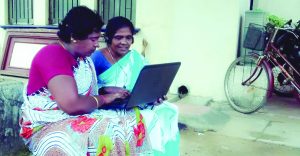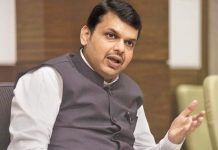 The ownership of computers remains low in the country, in spite of campaigns for digitalization, an analysis of National Sample Survey Office (NSSO) data reveals.
The ownership of computers remains low in the country, in spite of campaigns for digitalization, an analysis of National Sample Survey Office (NSSO) data reveals.
The data released on November 23, 2019 reveals, “Nearly 4.4 per cent of the rural households and 23.4 per cent of the urban households had computers”. Similarly, “Nearly 14.9 per cent of the rural households and 42 per cent of the urban households had internet facility”. The computing ability of the rural population too was poor. Computing ability is defined as a user’s ability to operate a desktop, laptop, palmtop, notebook, smartphone and tablets.
Among the major States, Kerala has the highest computing ability, while Chhattisgarh has the lowest. In the urban areas, Kerala is in second position, after Delhi. Tamil Nadu and Punjab are in the middle of the table. Computing ability, measured from NSS data on Social Consumption and Education, was found to be the lowest in the tribal population.
The study found that “in rural areas, among persons of age 5 years and above, 9.9 per cent were able to operate a computer, 13.0 per cent were able to use Internet and 10.8 per cent used Internet during last 30 days. In urban areas, among persons of age 5 years and above, 32.4 per cent were able to operate a computer, 37.1 per cent were able to use Internet and 33.8 per cent used Internet during last 30 days.
National Statistical Office (NSO), Ministry of Statistics and Programme Implementation have conducted a survey on Household Social Consumption: Education as part of 75th round of National Sample Survey (NSS). Prior to this, surveys on the same subject were carried out during 64th round (July 2007-June 2008) and 71stround (January-June 2014).
The NSO acts as the nodal agency for planned development of the statistical system in the country, lays down and maintains norms and standards in the field of statistics, involving concepts and definitions, methodology of data collection, processing of data and dissemination of results. It coordinates the statistical work in respect of the Ministries/Departments of the Government of India and State Statistical Bureaus (SSBs), advises the Ministries/Departments of the Government of India.
It maintains liaison with international statistical organizations, such as, the United Nations Statistical Division (UNSD), the Economic and Social Commission for Asia and the Pacific (ESCAP), the Statistical Institute for Asia and the Pacific (SIAP), the International Monetary Fund (IMF), the Asian Development Bank (ADB), the Food and Agriculture Organizations (FAO), the International Labour Organizations (ILO), etc.
It releases grants-in-aid to registered Non-Governmental Organizations and research institutions of repute for undertaking special studies or surveys, printing of statistical reports, and financing seminars, workshops and conferences relating to different subject areas of official statistics.
The main objective of NSS 75th round survey on Household Social Consumption: Education was to build indicators on participation of the persons of age 3 to 35 years in the education system, expenditure incurred on education of the household members and various indicators of those currently not attending education.
For persons of age 5 years and above, information was also collected on ability to operate computer, ability to use Internet and use of Internet during last 30 days. In addition to these, information on current attendance and related expenditure in respect of the erstwhile members of age 3 to 35 years currently attending education of the households was also collected.
The present survey was spread across the country and for the central sample, data were collected from 1,13,757 households (64,519 in rural areas and 49,238 in urban areas) covering 5,13,366 persons (3,05,904 in rural areas and 2,07,462 in urban areas), following a scientific survey methodology. In this survey, total number of persons of age 3 to 35 years surveyed was 2,86,456 (1,73,397 in rural areas and 1,13,059 in urban areas).
Literacy rate among persons of age 7 years and above was 77.7 per cent. It was 73.5 per cent in rural and 87.7 per cent in the urban areas. Among persons of age 15 years and above, in rural areas, 30.6 per cent had completed secondary or above level of education while in urban areas it was 57.5 per cent.
Close to 10.6 per cent of the persons of age 15 years and above in India had completed level of education graduate and above. This was 5.7 per cent in rural and 21.7 per cent in urban areas. Among persons of age 3 to 35 years, 13.6 per cent never enrolled, 42.5 per cent ever enrolled but currently not attending while 43.9 per cent were currently attending.
In rural areas, 15.7 per cent never enrolled, 40.7 per cent ever enrolled but currently not attending while 43.5 per cent were currently attending. In urban areas, 8.3 per cent never enrolled, 46.9 per cent ever enrolled but currently not attending while 44.8 per cent were currently attending.
Among males, 11.0 per cent never enrolled, 42.7 per cent ever enrolled but currently not attending while 46.2 per cent were currently attending. Among females, 16.6 per cent never enrolled, 42.2 per cent ever enrolled but currently not attending while 41.2 per cent were currently attending.
Net Attendance Ratio (NAR) at primary level was 86.1 per cent. The figure was 72.2 per cent at ‘upper primary / middle level’ and 89.0 per cent at ‘primary and upper primary /middle level’. Nearly 96.1 per cent of the students[1] were pursuing general courses and 3.9 per cent were pursuing technical/professional courses. Among male students, nearly 95.5 per cent were pursuing general courses and 4.5 per cent were pursuing technical/professional courses.
Among female students, nearly 96.9 per cent were pursuing general courses and 3.1 per cent were pursuing technical/professional courses. Among students pursuing general courses, nearly 55.8 per cent were male students and 44.2 per cent were female students. Among students pursuing technical/professional courses, nearly 65.2 per cent were male students and 34.8 per cent were female students.
The indicators relating to free education, free or subsidized textbooks and stationery to students of age 3 to 35 years currently attending at pre-primary and above level found that about 57.0 per cent of the students in rural and 23.4 per cent in urban areas received free education.
About 15.7 per cent of the students in rural and 9.1 per cent in urban areas received scholarship/ stipend/ reimbursement. Nearly 54.2 per cent of the students in rural and 23.7 per cent in urban areas received free/ subsidized textbooks. Close to 10.0 per cent of the students in rural and 7.2 per cent in urban areas received free/subsidized stationery.
In rural areas, average expenditure per student pursuing general course in the current academic year was 5,240 while in urban areas it was 16,308. In rural areas, average expenditure per student pursuing technical/professional course in the current academic year was 32,137 while in urban areas it was 64,763.
Nearly 4.4 per cent of the rural households and 23.4 per cent of the urban households had computer. Nearly 14.9 per cent of the rural households and 42.0 per cent of the urban households had Internet facility. (c) In rural areas, among persons of age 5 years and above, 9.9 per cent were able to operate a computer, 13 per cent were able to use Internet and 10.8 per cent used Internet during last 30 days. In urban areas, among persons of age 5 years and above, 32.4 per cent were able to operate a computer, 37.1 per cent were able to use Internet and 33.8 per cent used Internet during last 30 days.
letters@tehelka.com













